Table of Contents
A packing list for the Mardi Himal Trek includes essential clothing, footwear, and equipment tailored for the Annapurna region’s diverse weather and high-altitude conditions. It ensures trekkers are prepared for safety, comfort, and enjoyment with lightweight, weather-appropriate gear like waterproof boots, layered clothing, and a sleeping bag.
Packing List for the Mardi Himal Trek
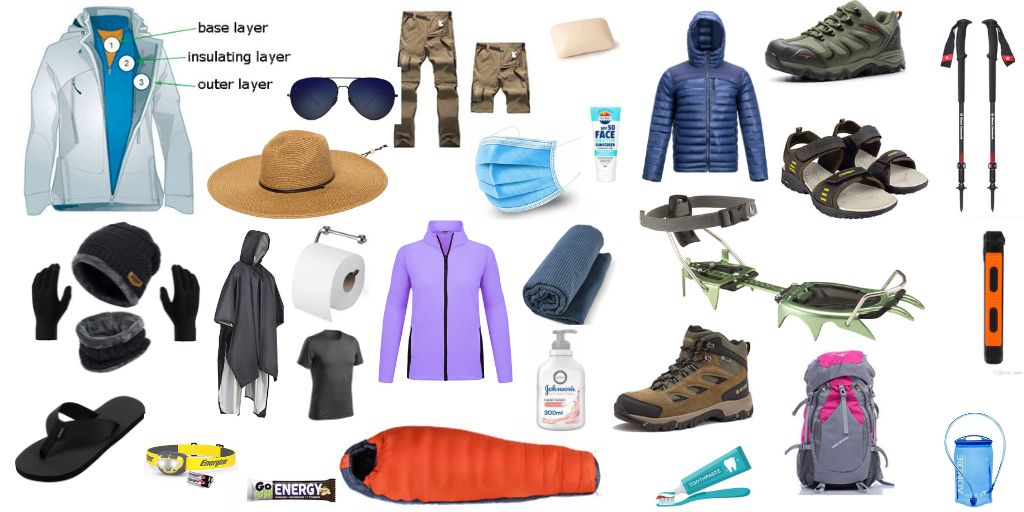
The Mardi Himal Trek is a breathtaking journey through Nepal’s Annapurna region, offering stunning views of peaks like Annapurna South, Machhapuchhre (Fishtail), Hiunchuli, and Dhaulagiri. This moderately challenging trek, spanning 5 to 7 days, is perfect for both beginners and seasoned trekkers seeking a less-crowded trail. To ensure a safe, comfortable, and enjoyable experience, a well-thought-out packing list for the Mardi Himal Trek is essential. This blog provides a comprehensive guide to the trekking gear, clothing, essential equipment, and personal items you’ll need, tailored to the unique conditions of this Himalayan adventure.
Why a Proper Packing List for the Mardi Himal Trek Matters
The Mardi Himal Trek takes you from the lush forests of Pokhara to the high-altitude Mardi Himal Base Camp at 4,500 meters. Weather can be unpredictable, with warm days in the lower regions and chilly nights at higher altitudes. Packing light yet smart is key to avoiding unnecessary weight while ensuring you’re prepared for varying conditions, such as rain, snow, or intense sunlight. A well-prepared trekking packing list ensures safety, comfort, and an unforgettable experience.
Below, we’ve categorized the essential gear for Mardi Himal Trek into clothing, footwear, equipment, and personal items, incorporating recommendations from experienced trekkers and local experts. Whether you’re trekking in spring, autumn, or winter, this guide will help you pack efficiently.
Comprehensive Packing List for the Mardi Himal Trek
1. Clothing for Trekking
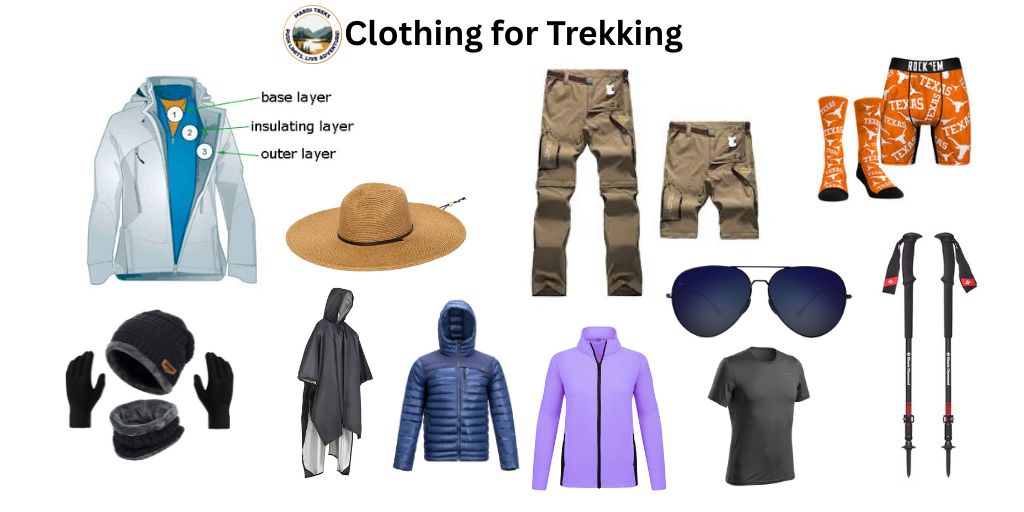
Proper clothing for trekking is crucial for staying comfortable in the Annapurna region’s diverse climates. Layering is key to adapting to temperature changes, especially at high-altitude trekking elevations.
- Base Layers: Pack 2-3 quick-dry trekking shirts (long and short sleeves) made of moisture-wicking materials like polyester or merino wool. Avoid cotton, as it retains moisture and can cause discomfort. Thermal shirts and trousers are essential for higher altitudes, especially in winter (December to February), to maintain warmth while allowing flexibility.
- Mid Layers: A fleece jacket or lightweight pullover provides insulation during chilly mornings or evenings. A puffy down jacket (lightweight and packable) is ideal for cold nights at Mardi Himal Base Camp.
- Outer Layers: A waterproof shell jacket or lightweight raincoat/poncho is a must, especially during the monsoon season (June to August). A hard-shell windbreaker protects against cold winds and unexpected rain.
- Hiking Pants and Shorts: Bring 1-2 pairs of convertible trekking pants with side pockets, which can be folded into shorts for warmer lower regions in spring or autumn. Pack 2-3 pairs of shorts for summer treks or lower altitudes.
- Underwear and Socks: Include 4-5 pairs of moisture-wicking underwear and 4 pairs of trekking socks (mix of lightweight and thick for warmth). Avoid layering socks, as it can cause discomfort in cold weather.
- Headwear and Gloves: A sun hat or cap and sunglasses with UV protection are essential for shielding against intense sunlight. A beanie or thermal hat keeps you warm at night. Pack glove liners and a pair of thicker outer gloves for warmth and grip on trekking poles.
2. Footwear
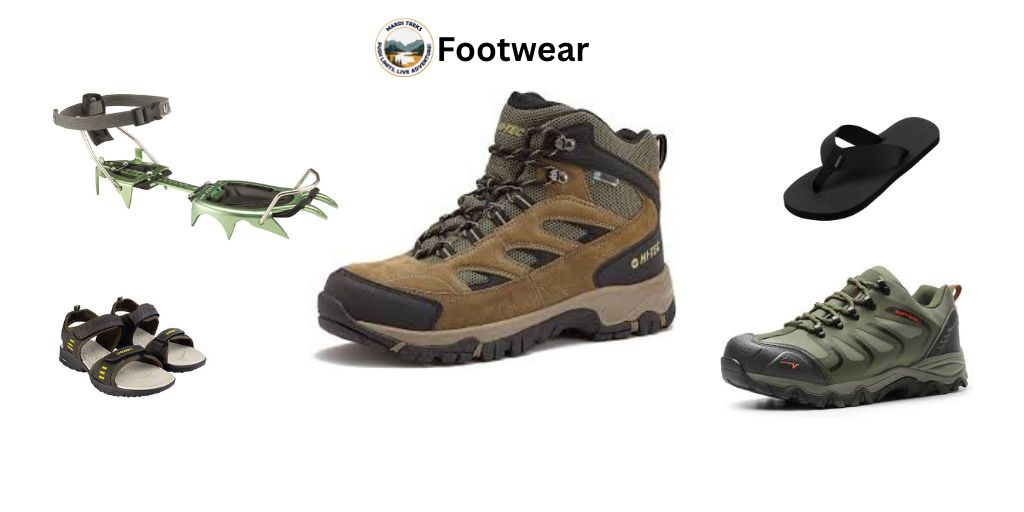
Proper hiking gear for your feet ensures safety and comfort on the Mardi Himal’s rocky and sometimes slippery trails.
- Hiking Boots: Invest in sturdy, waterproof hiking boots with strong ankle support and deep-cut traction soles. Break them in before the trek to avoid blisters. Recommended brands include Salomon, Meindl, or Scarpa.
- Trekking Shoes/Sandals: Lightweight trekking shoes or sandals are useful for relaxing at teahouses. Flip-flops are great for comfort after a long day of trekking.
- Crampons/Spikes: For winter treks (December to February), pack lightweight crampons or spikes for snowy or icy trails.
3. Essential Equipment
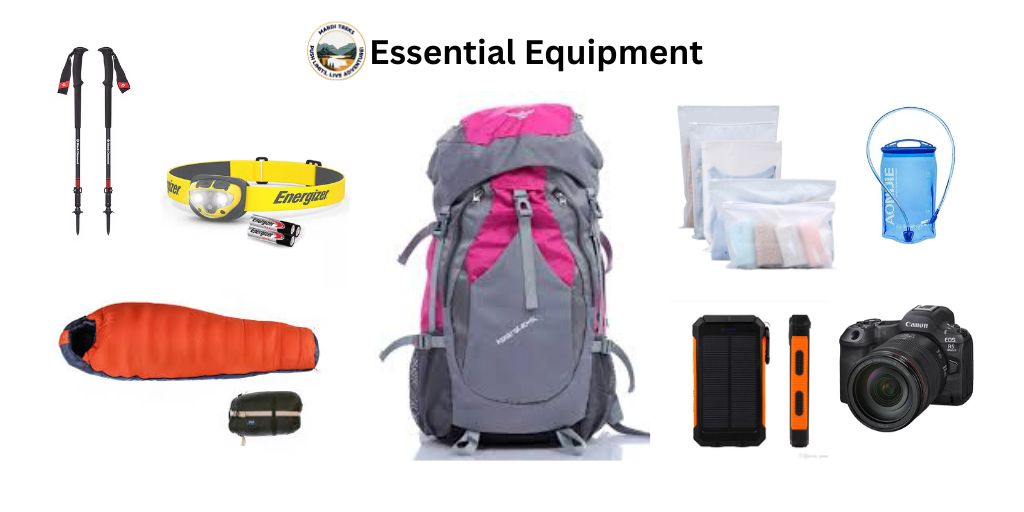
The right trekking gear enhances your trek preparation and ensures you’re ready for the challenges of Nepal trekking.
- Backpack: A 35-45 liter daypack with a waist strap is sufficient for teahouse trekking, as you’ll stay in guesthouses each night. Porters can carry heavier loads (up to 20-25 kg) if hired.
- Trekking Poles: Optional but highly recommended, trekking poles reduce joint stress and improve balance on steep or slippery trails. Lightweight, packable poles like TYTN Carbon X are ideal.
- Sleeping Bag: A four-season sleeping bag (rated to -15°C) is recommended, especially for higher altitudes. Teahouses provide blankets, but they may not be clean or warm enough. You can rent sleeping bags in Kathmandu or Pokhara for about USD 35.
- Headlamp: A headlamp (e.g., Petzl Tikkina or Black Diamond Astro, 175 lumens) with extra batteries is essential for early morning or late evening treks and navigating poorly lit teahouses.
- Water Bottle/Hydration Bladder: Carry a reusable water bottle (1-2 liters) or a hydration bladder to stay hydrated. Water purification tablets are a must, as bottled water is expensive at higher altitudes, and natural water sources need treatment.
- Waterproof Bags/Ziplocks: Protect electronics and documents with waterproof bags or ziplocks, especially during the monsoon season.
- Power Bank: Teahouses may charge for electricity or lack power, so a power bank (10,000 mAh) ensures your devices stay charged.
- Camera/GoPro: Capture the stunning Himalayan scenery with a camera or GoPro. A smartphone works, but a dedicated device enhances photo quality.
4. Personal Items and Safety
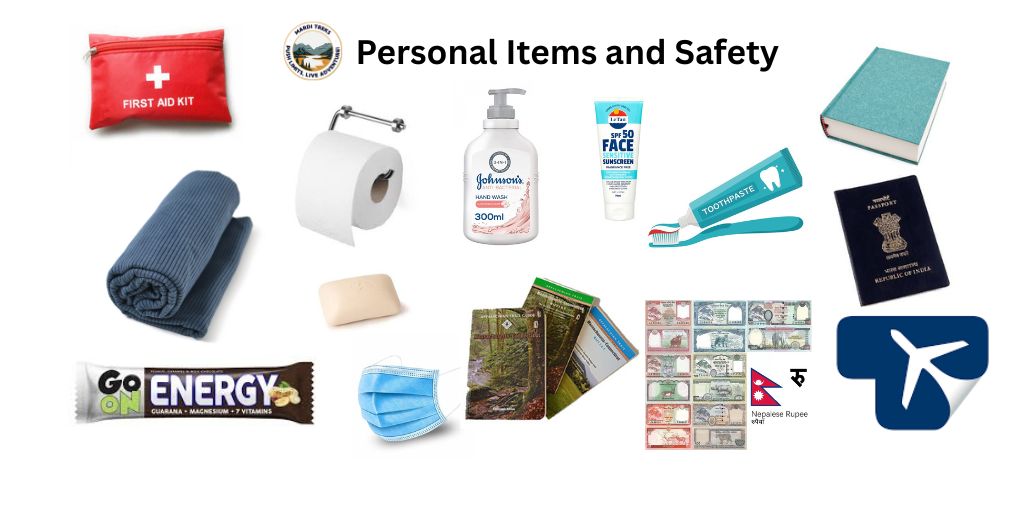
These personal items and hiking essentials ensure safety and convenience during your trek.
- First-Aid Kit: Include motion sickness pills, aspirin, iodine tablets, oral rehydration packets, Diamox (for altitude sickness), and blister protection bandages. Your guide may carry a group kit, but a personal one is wise.
- Toiletries: Pack toilet paper, wet wipes, anti-bacterial hand wash, quick-dry towel, lip balm, sunscreen (SPF 50+), and multi-purpose soap (biodegradable). Teahouses may lack Western toilets, so be prepared.
- Snacks and Energy Bars: Bring snacks like chocolates, nuts, or energy bars for quick energy boosts. Teahouses offer meals like Dal Bhat, but snacks are handy on the trail.
- Dust Mask: Useful for dusty trail sections, especially in lower regions.
- Travel Games/Books: A small travel game (e.g., cards, chess) or journal keeps you entertained at teahouses. A trail map or guidebook is optional but helpful.
- Permits: Carry your TIMS card and Annapurna Conservation Area Permit (ACAP) at all times, as checkpoints are common. Make three copies of your passport, Nepal visa, and travel insurance documents, leaving one with a travel partner and one at home.
- Travel Insurance: Mandatory for Nepal trekking, your travel insurance should cover high-altitude evacuation (up to 6,000m) and medical emergencies.
- Cash: Carry 10,000-20,000 NPR in cash for tips, souvenirs, or teahouse extras (e.g., Wi-Fi, hot showers). ATMs are unavailable on the trail.
Seasonal Considerations for Trekking in Nepal
The trekking season affects your trekking packing list:
- Spring (March-May) and Autumn (September-November): These are peak seasons with mild weather and clear views. Pack lighter clothing but include layers for cold nights.
- Winter (December-February): Expect snow at higher altitudes. Add crampons, thicker layers, and a warmer sleeping bag.
- Monsoon (June-August): Avoid trekking due to heavy rain, landslides, and leeches. If unavoidable, prioritize rain gear and waterproof boots.
Faq’s
What type of clothing is best for the Mardi Himal Trek?
Pack moisture-wicking base layers, a fleece jacket, and a waterproof shell for varying weather conditions. Layering is key for comfort at different altitudes.
Do I need a sleeping bag for teahouse trekking?
A four-season sleeping bag (-15°C) is recommended for warmth and hygiene, as teahouse blankets may not be sufficient or clean.
What footwear is essential for the Mardi Himal Trek?
Sturdy, waterproof hiking boots with ankle support are crucial, and lightweight sandals are useful for teahouse relaxation.
How much cash should I carry on the trek?
Bring 10,000-20,000 NPR for tips, snacks, or teahouse extras like Wi-Fi or hot showers, as ATMs are unavailable.
Is travel insurance necessary for the Mardi Himal Trek?
Yes, travel insurance covering high-altitude evacuation (up to 6,000m) and medical emergencies is mandatory for safety.
How Mardi Trek Will Help You?
Mardi Treks, a reputable trekking agency based in Nepal, specializes in organizing seamless Nepal trekking experiences. Here’s how they can enhance your Mardi Himal Trek:
- Expert Guides and Porters: Since April 2023, solo trekking requires a licensed guide for safety. Mardi Treks provides experienced guides who know the Annapurna region, offer cultural insights, and monitor for altitude sickness. Porters can carry up to 20-25 kg, allowing you to focus on enjoying the trek with a lighter daypack.
- Permit Assistance: Mardi Treks handles the paperwork for your TIMS card and ACAP, saving you time and ensuring compliance with regulations.
- Tailored Itineraries: Whether you’re a beginner or seasoned trekker, Mardi Treks customizes your 5-7 day itinerary, factoring in the trekking season, fitness level, and preferences for teahouse trekking.
- Gear Rentals: They offer affordable rentals for essential equipment like sleeping bags, down jackets, and trekking poles in Kathmandu or Pokhara, supporting lightweight packing.
- Safety and Support: Mardi Treks ensures travel insurance requirements are met, provides first-aid training to guides, and coordinates emergency evacuations if needed. They also advise on hiking essentials like water purification tablets and hydration strategies.
- Local Expertise: Their team offers tips on trek preparation, including training for high-altitude trekking and packing for comfort. They also recommend snacks, personal items, and clothing for trekking based on current trail conditions.
Final Thoughts
The Mardi Himal Trek is a hidden gem in the Annapurna region, offering serene trails, cultural encounters, and jaw-dropping views. A well-prepared packing list for the Mardi Himal Trek ensures you’re ready for its challenges while keeping your load light. By packing the right trekking gear, clothing, essential equipment, and personal items, you’ll enjoy a safe and memorable adventure. For more details or to book a trek, contact a registered trekking agency like Himalayan Masters or Ace the Himalaya.
Happy trekking, and embrace the magic of the Himalayas!able journey through Nepal’s Himalayan paradise.
